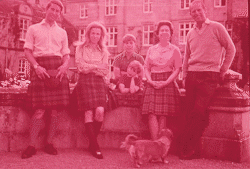Probably, every resident in Hunters Creek Village was touched by Hurricane Harvey in some way. Sadly, there are those of us who lost the images and sounds of life as it once was and the chance to revisit happier times with their eyes and not just their minds. Happily, there is something that can be done to keep from leaving more memories in the path of any kind of disaster.
Each of us has thought about preserving photos and videos and slides and negatives and VHS cassettes and film and audio and on and on at one time or another. Then, comes the next thought…how do I go about getting it done? We started looking around for answers.
Almost immediately, Disc Inc. got and held our attention. David Carter earned it when he met us at the front door during our mission. David, known as “YeTi,” is not only the greeter; he is the owner!
Disc Inc. has been a hands-on family business since 1982, the days when scanning was to 8” floppies. Literally growing with the industry and staying abreast of advances in technology, YeTi’s entire family works in the business and has been committed to providing customers the best scanning services possible! Disc Inc. is homegrown, and its roots were planted 38 years ago!
YeTi is a native Houstonian born in Heights Hospital, the product of a Texan Coast Guard veteran and Houston Police Department sergeant father and a second-generation Houstonian mother who provided him with three sisters and a proper upbringing.
YeTi’s wife Carrie was born in Michigan but got here at an early age, so she considers herself a native Houstonian. Her father, a retired project manager with Cameron Iron Works and now 92 and living with them, and nurse mother raised her and her brother in Northwest Houston. She and YeTi have been married for 34 years!
Along the way, Carrie and YeTi were blessed with daughter Jacqulyn, who was in the band at Cy-Fair HS, earned a business degree at UH, and worked with Disc Inc. for many years. She remains on call while tending to granddaughter Ayva, who, at 4.5, is the true matron of the Carter estate!
Working as a family makes all the difference. The Carters understand the value of the memories placed in their hands. Disc Inc. considers each project its only project, whether it be working with one VHS or scanning 10,000 slides/negatives. All projects are completed at Disc Inc. on Hempstead Road, just inside Loop 610. Their pricing is truly fair and understandable.
The door is always open at Disc Inc., even today. We are always ready to greet you with face masks and plenty of hand sanitizer. Their smiles might be out of sight, but trust me, they will be there as you hand them your life in pictures and words.
Just imagine having your video/audio treasures at your fingertips on your phone or smart TV. Just think of the comfort of handing over your treasures to another family located right around the corner, a family that boasts expertise in safeguarding some pretty special things in your life. The Carters are church volunteers, they are decorated and lifetime members of Girl Scouts, and they harbor passions for camping and bike riding.
And just think of having one less thing to worry about when the creek starts to rise...
You can find YeTi and Carrie Carter in the shop at Disc Inc. at 8990 Hempstead Rd #110. If you call 713-864-6845, you might even get to talk to Jacqulyn!
Don’t worry about the pooch in the corner. That’s Otis. He fashions himself as the family guard dog. He’s the Carters’ 11-year-old family basset hound. Otis will not answer the phone while on duty.
We are honored to feature Disc Inc. and the Carter family in our Sponsor Spotlight this month!
November 2020 • Hunters Creek Village Living









